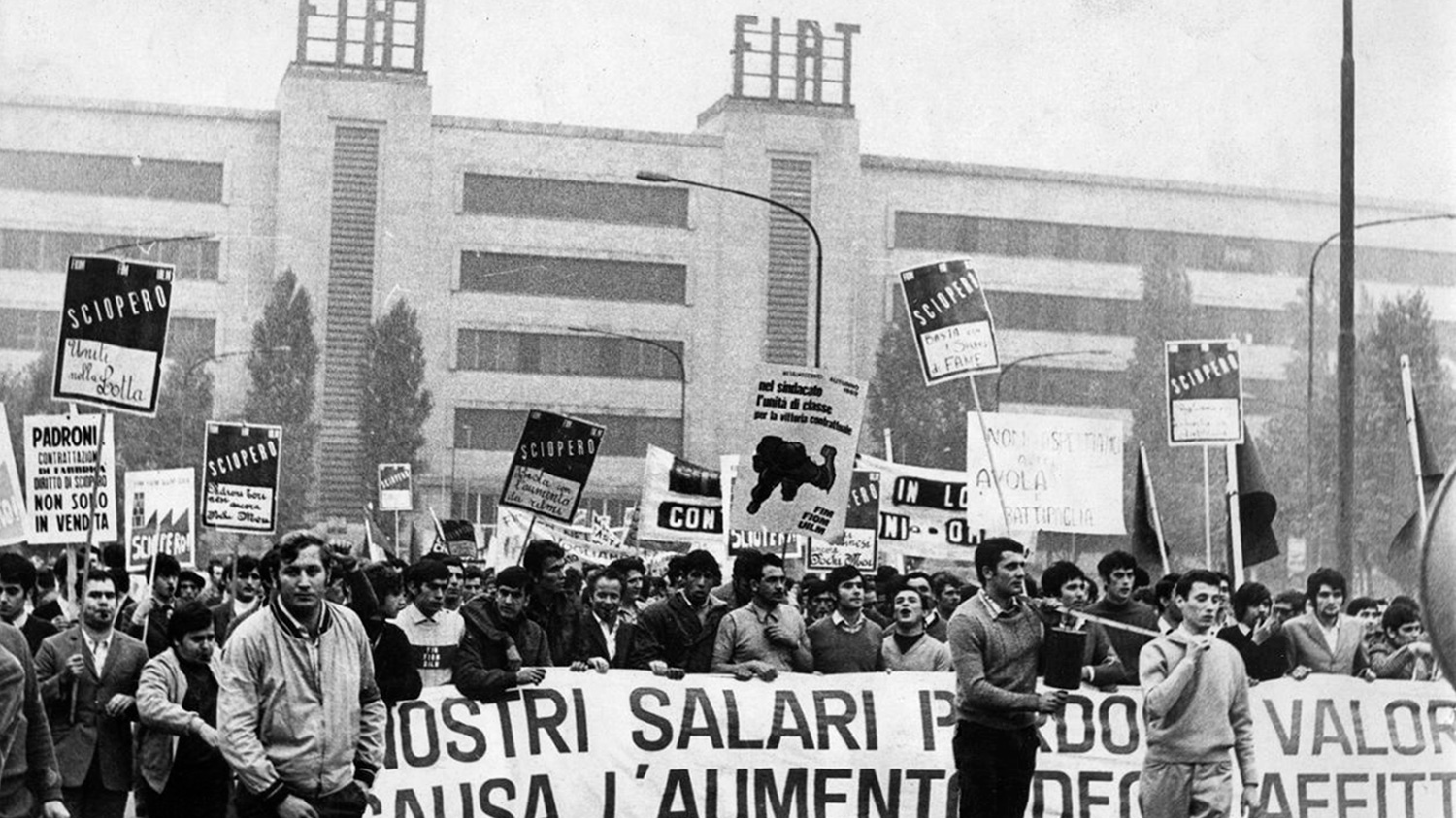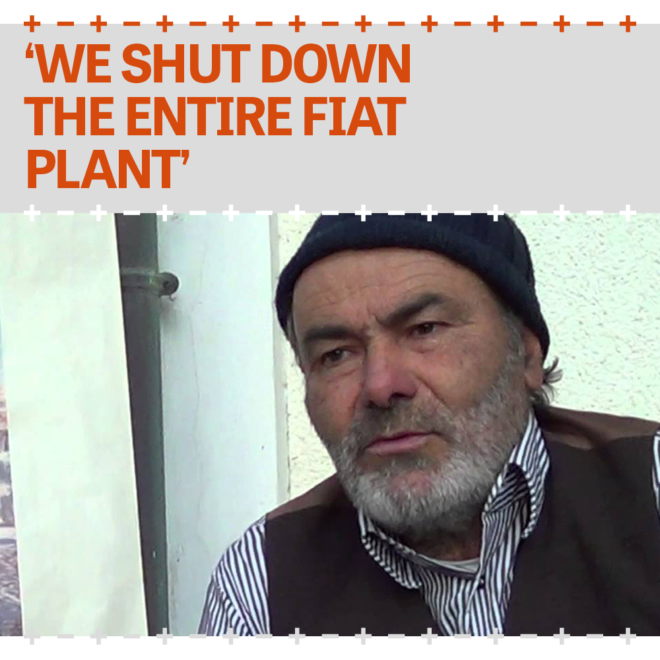Alfonso Natella (1945), Italy. Fiat Mirafiori, Turin, 29 May 1969.
“I migrated north together with just about everybody I knew. We had no choice. In the south, there was only poverty and unemployment, apart from your mother and the sea. I had picked pears, harvested peaches, lugged tomatoes. Heavy work of sometimes fourteen hours a day, but not enough to make a living.
“Fiat was like the promised land. The mythical, great Fiat. Everything would be different there.
“What a deception. We stood at the assembly line with hundreds of workers. Not people, but numbers. The work was even heavier than what I was used to. I stayed at my sister’s house, but many workers slept at the train station: people in Turin refused to let out a room to ‘Southerners’ like us. One day, I visited the internal nursing department: it looked like a field hospital! Wounded workers everywhere. Apparently, we were at war, but with whom?
“There were students at the gates, handing out flyers and saying we were being exploited – as if we hadn’t realised that yet. Although they were not my kind of people, I had decided to drop by their meeting. To my surprise, there were more people like me there: poor slobs from the South who were tired of being bossed around. We decided to organise a wild strike.
“On the day of the strike, I brought a big piece of cardboard on a whim, with the words ‘Potere Operaio’ on it (‘Workers’ power’). The guard held me back and wanted to take me to the chiefs. I pretended to cooperate, but suddenly pulled him by his tie and delivered a few punches. I felt he had no right to boss me around. There were cheers all around me.
“It was a spontaneous protest, but there definitely was an idea behind it: I wanted to make a statement because I was secretly afraid that nobody would participate in the strike. In front of everybody, I had risked my job for our struggle. In this way, I wanted to show that there are more important things than money: dignity.
“There were about eighty of us. It was actually quite simple: every assembly line had a button that could stop the conveyor-belt. We were able to shut down all the assembly lines. Nobody worked that day. For the time being, the tables had turned: we, the workers, had the power, the guards feared us.
“It was the beginning of the great labour conflict at Fiat. I myself was fired immediately. It was about higher wages and shorter hours, sure, but above all, we couldn’t accept that we were treated like the ‘lesser ones’. A worker is a human being too! The feeling that I was capable of crippling a nationalist capitalist myth has been dear to me my entire life.

Hot Autumn
During the ‘Hot Autumn’ of 1969, millions of workers went on strike in Italy. The brutal pace in the plants and the poor working and living conditions made them feel intimidated, humiliated and exploited by their superiors. The workers often did not involve the labour unions when they organised the strikes. Radical left-wing student groups frequently joined the workers to help them organise and set goals; they were hoping for a social revolution.
The ‘Hot Autumn’ began with strikes at Fiat Mirafiori in Turin in May 1969 and culminated in a big clash between protesters and the police in July. From the student-worker movement in Turin, the radical left-wing groups Potere Operaio and Lotta Continua (‘Continuous Struggle’) emerged. In the 1970s, the conflict intensified as the communist Brigate Rosse committed acts of left-wing terror.
